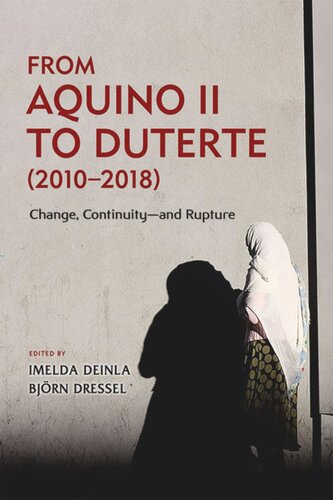

Most ebook files are in PDF format, so you can easily read them using various software such as Foxit Reader or directly on the Google Chrome browser.
Some ebook files are released by publishers in other formats such as .awz, .mobi, .epub, .fb2, etc. You may need to install specific software to read these formats on mobile/PC, such as Calibre.
Please read the tutorial at this link: https://ebookbell.com/faq
We offer FREE conversion to the popular formats you request; however, this may take some time. Therefore, right after payment, please email us, and we will try to provide the service as quickly as possible.
For some exceptional file formats or broken links (if any), please refrain from opening any disputes. Instead, email us first, and we will try to assist within a maximum of 6 hours.
EbookBell Team

4.1
70 reviewsThe Duterte administration is often considered a rupture in Philippines’ politics. Yet, how different is Duterte’s programme of change from the past governments, particularly from its predecessor, the Aquino II administration? Is there a shift in regime orientation and policy preferences from Aquino II to Duterte? What will this mean to the future direction of Philippine democracy, its economic development, peace and security, and relations with other countries? This volume focuses on four critical areas—politics and governance; economic governance; Mindanao peace process; and international relations—to illustrate continuities or discontinuities in policies and governance of institutions to explain the dynamics of change in the Philippines. It pays particular attention to the crucial period between Aquino II and the early years of Duterte. The reason is that Aquino II represents an important period for rebuilding and consolidating institutions of governance and accountability after two previous tumultuous administrations. Yet Aquino II also demonstrates the inherent flaws of Philippine democracy and unravels the contradictory forces vying for state power that sets the scene for Duterte’s rise. Reflecting on the crucial transition period between the two presidencies, while also providing a much-needed update on the most noteworthy policy changes since Duterte’s inauguration, the book fills an important scholarly gap in understanding Asia’s oldest and most puzzling democracy.